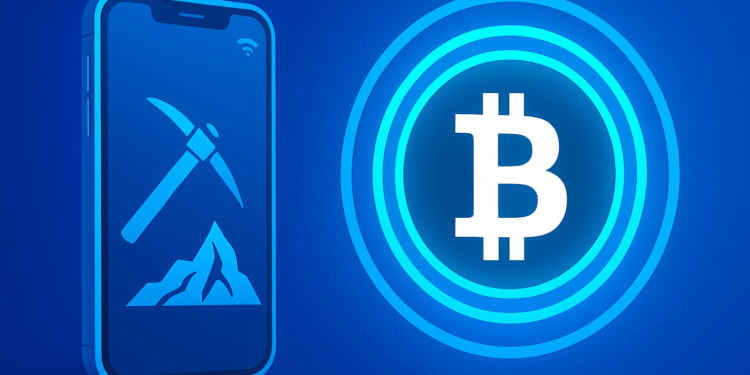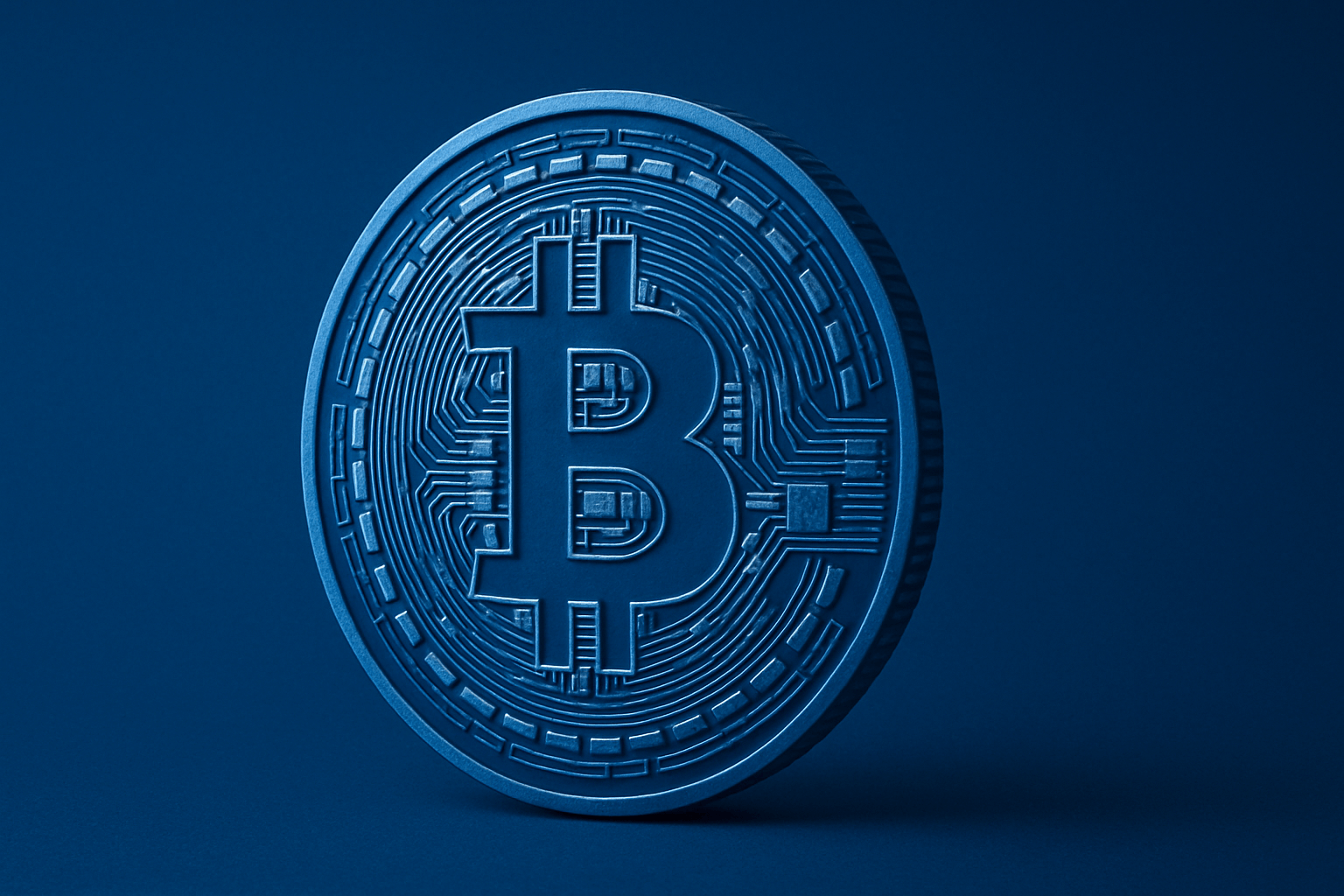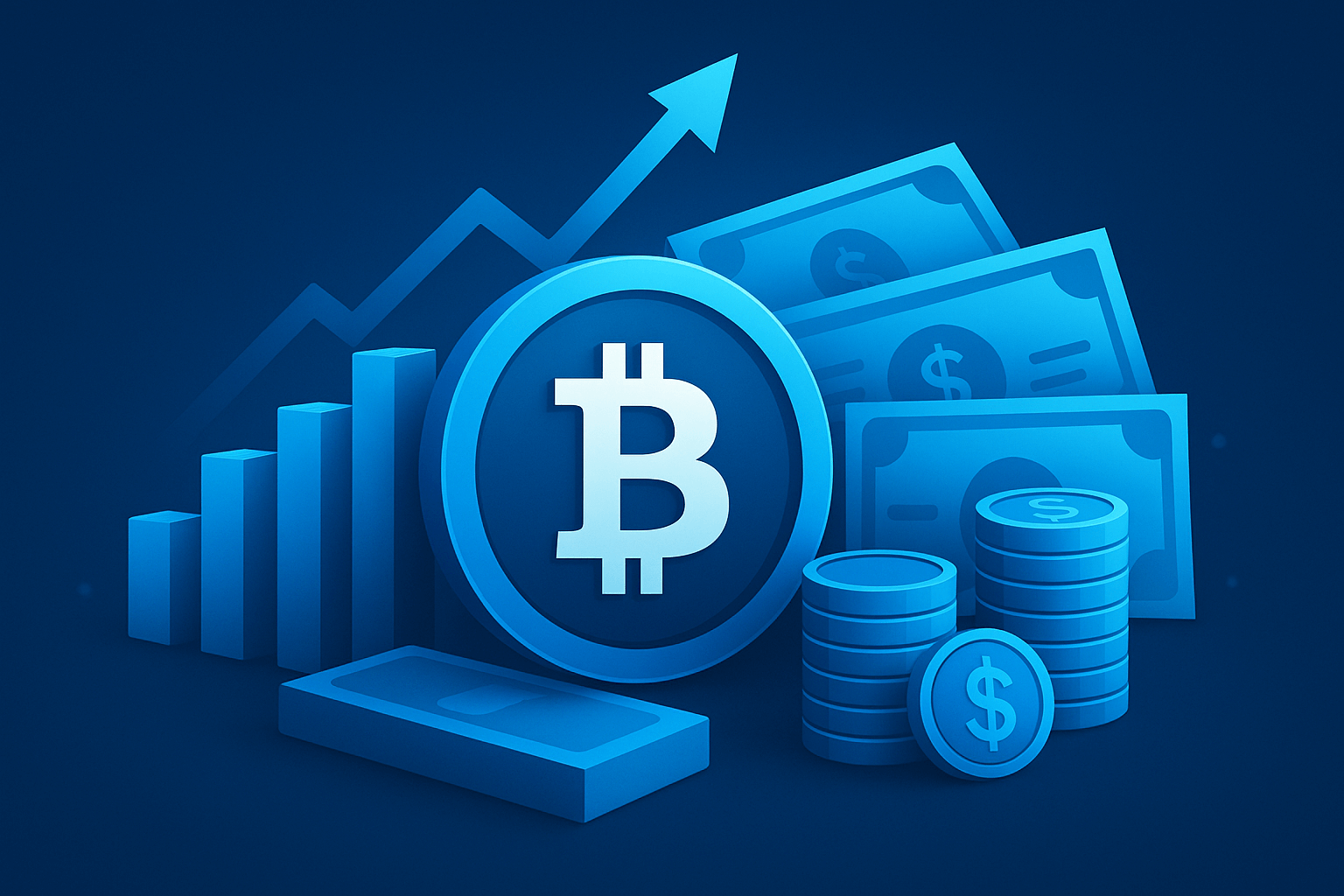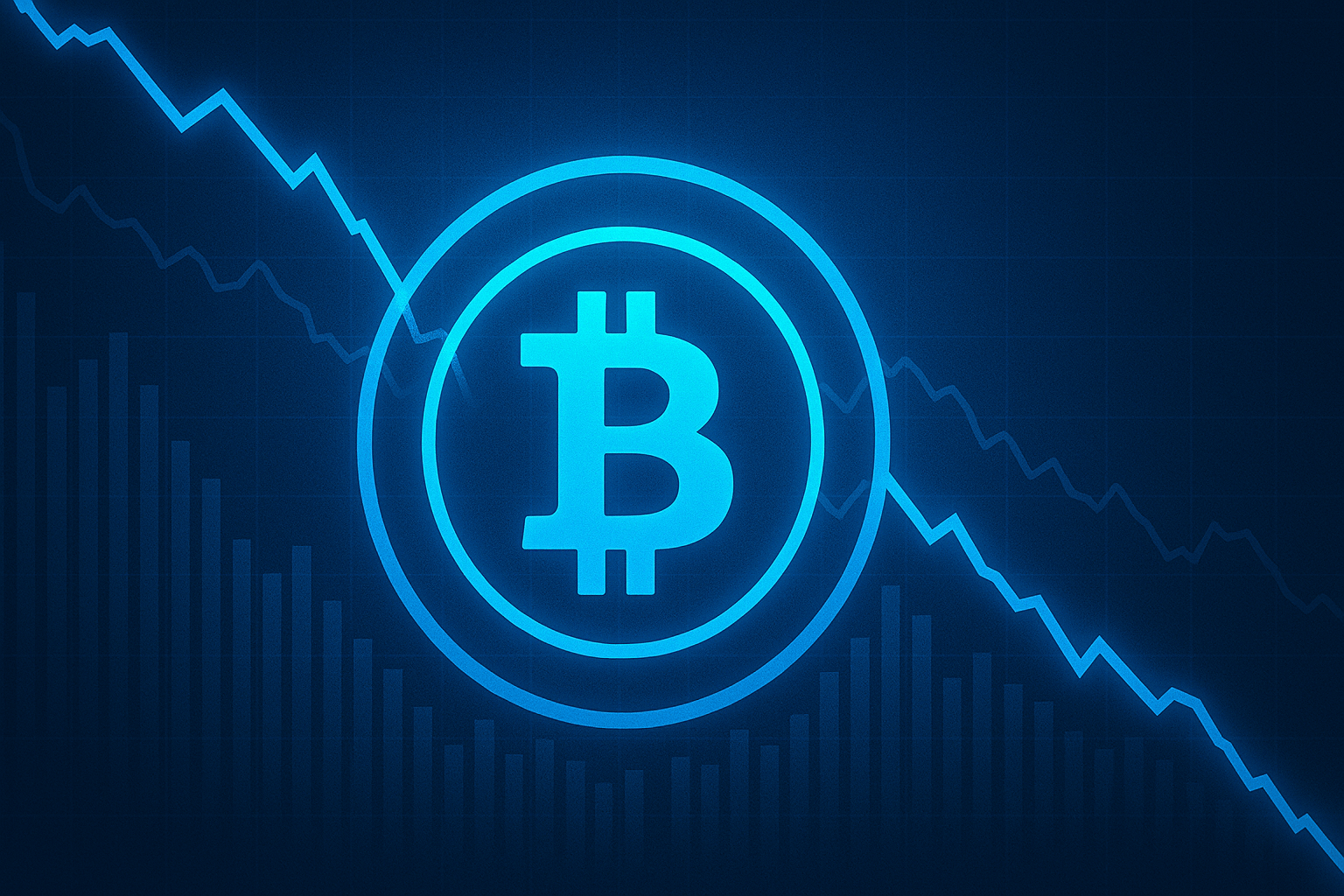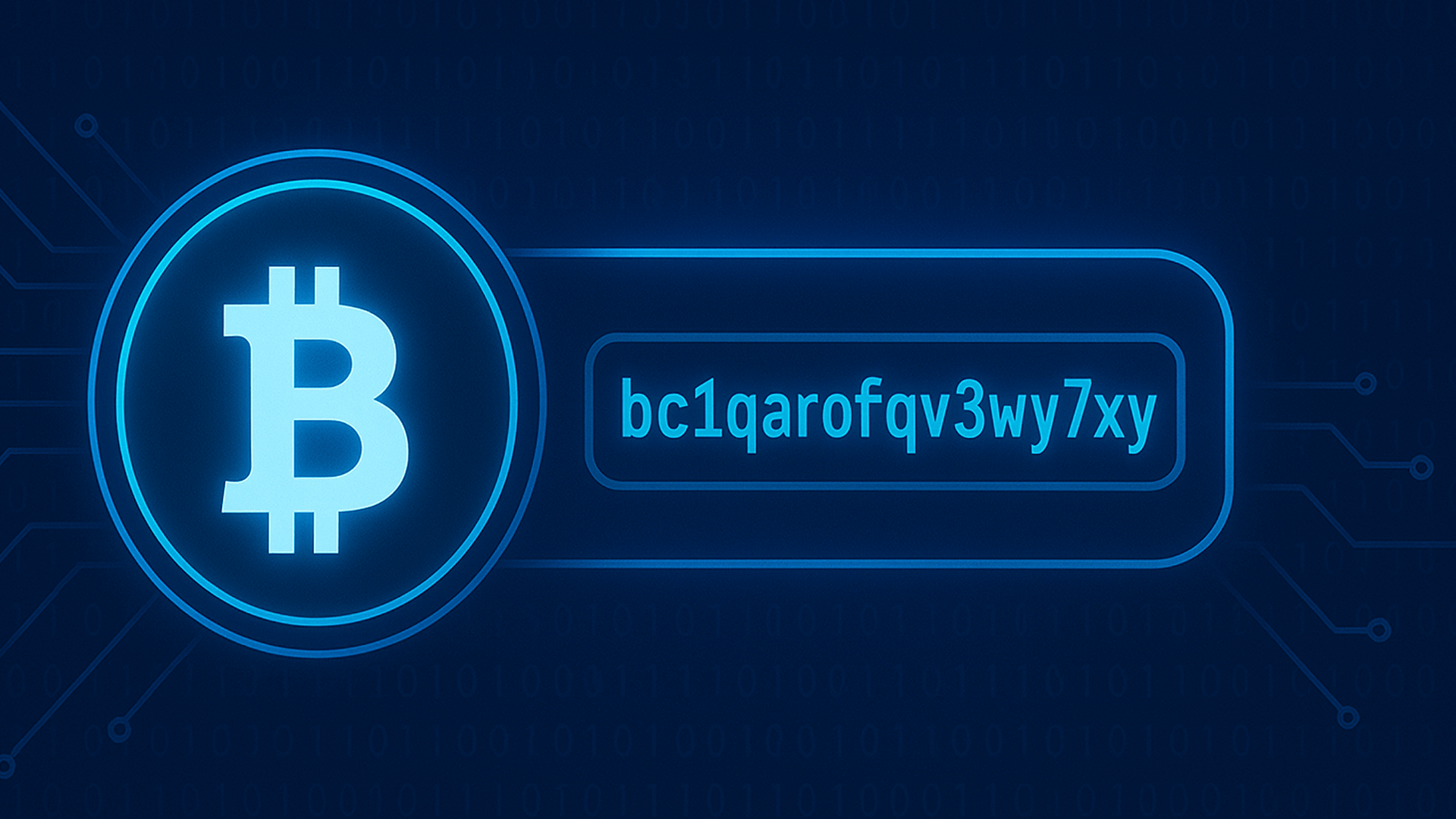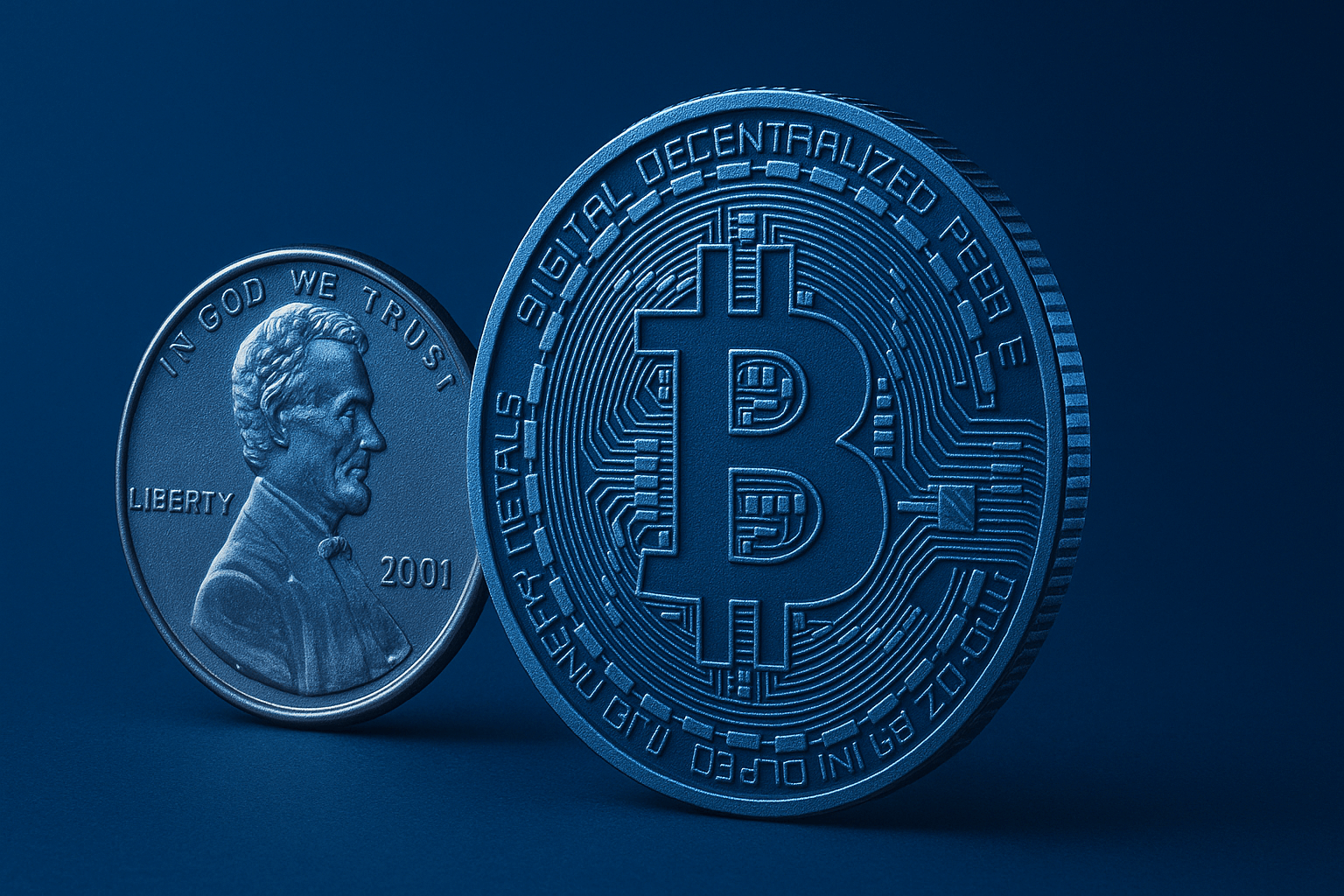Every few months, price spikes and social media hype revive the same question: if you can stream movies and edit photos on a smartphone, surely it can help you earn a slice of Bitcoin. The idea sounds friendly and low-risk—download an app, let it run, and watch small amounts of BTC trickle in. After testing apps, running numbers, and comparing against professional miners, the truth is blunt: you can make a phone compute hashes, but the payout for Bitcoin is so close to zero that most people never see a meaningful balance. That doesn’t mean your phone is useless for earning or learning; it just means hashing on the device is the wrong tool for the job. There are smarter paths to earn sats, manage miners, and explore the network without melting your battery.
The idea is tempting—does phone mining actually pay?
The story sells itself. Bitcoin’s price dominates headlines, and the phrase “passive income” pairs nicely with something we already carry everywhere. On app stores and Telegram channels, you’ll find polished screenshots, animated graphs, and the promise that with a few taps, your handset can join the global mining race. The friction seems so low that it feels like a life hack—the sort of trick you tell friends about over coffee.
What Bitcoin mining demands today (and why phones can’t meet it)
Mining is the process of turning electricity into security: machines guess numbers to solve cryptographic puzzles, secure the blockchain, and earn rewards. Over a decade, that guessing game evolved from hobbyist rigs to industrial operations that bargain for megawatts and ship specialized machines by the palette. Understanding this escalation explains why a pocket-sized device cannot keep up, no matter how new or expensive.
Three pillars define the race: raw performance (hashrate), network difficulty that adapts to that performance, and the cost of each watt burned to produce hashes. Each pillar has shifted in favor of purpose-built hardware, leaving consumer phones far behind. That gap is not about brand or model; it’s structural.
The hashrate arms race: from CPUs to ASICs
Bitcoin’s earliest blocks were mined on ordinary CPUs, then quickly on GPUs and FPGAs. The current era belongs to ASICs—application-specific integrated circuits designed for one job: SHA-256 hashing. Where a desktop GPU might once have contributed meaningfully, a modern ASIC produces terahashes per second (TH/s) with ruthless efficiency. Think of it as the difference between pedaling a bicycle and riding a rocket sled: both move, but they don’t exist in the same league.
Contemporary, widely deployed ASICs deliver more than 100 TH/s while fitting into compact enclosures. Meanwhile, a phone’s effective SHA-256 capability in real-world conditions typically sits in the megahash or low gigahash range at best—and often far less because of heat and operating system throttling. We benchmarked a mid-tier Android device with a hashing app and saw the rate plunge after minutes, as the system cut performance to keep temperatures in check.
Difficulty, halving, and miner competition
Bitcoin’s protocol adjusts difficulty roughly every two weeks so that new blocks arrive about every 10 minutes, regardless of how much hardware joins the network. As more ASICs arrive, the difficulty climbs, squeezing out weaker machines and concentrating rewards among efficient operators. Every roughly four years, the block subsidy halves, reducing the number of new BTC paid to miners and demanding even better efficiency to stay profitable.
This double pressure—rising difficulty plus halving—acts like a treadmill that speeds up over time. If you’re not upgrading hardware or your power bill is high, margins fade. For a phone, there’s no upgrade path: the hardware is fixed, the system actively avoids sustained heavy loads, and battery limits add another choke point. Even extraordinary luck won’t overcome probabilities set by trillions of ASIC guesses happening each second across the globe.
The economics of electricity and efficiency
Mining profit depends on how many hashes you produce per watt, multiplied by energy price. ASICs measure efficiency in joules per terahash (J/TH), and the best units push this number relentlessly down. Phones were never designed to sit at 100% load for days; they aim for bursts of power, then cool. That means they spend more energy per useful hash, and they pay for it with heat, throttling, and battery wear.
We compared a household electricity cost of $0.18/kWh against the power draw of a phone under sustained load. The expense to keep the device plugged and hot was small in dollars, but gigantic relative to the near-zero income. It’s like running a space heater to grow a single blade of grass.
Can a smartphone mine Bitcoin right now? The technical reality
The short answer is yes—you can run a hashing routine on Android and watch a counter increase. The long answer is that the counter means almost nothing when surrounded by industrial hashrate. And the longer you run the test, the worse the numbers get as the operating system clamps down to protect the battery and keep the device usable for ordinary tasks.
Phone vs. ASIC performance, by the numbers
Below is a rough, real-world comparison. Exact figures vary by model and environment, but the relationship is consistent: ASICs dwarf phones by many orders of magnitude.
| Device | Typical hashrate | Power draw | Efficiency (approx.) |
| Modern ASIC miner | 100–150 TH/s | 2.8–3.5 kW | 20–30 J/TH |
| Mid-range Android phone | ~0.2–1.0 GH/s (bursty, then throttled lower) | 5–10 W while charging under heavy load | Billions of J/TH (ineffective) |
| High-end Android phone | ~1–3 GH/s briefly, then reduced by heat | 8–12 W under sustained load | Still astronomically less efficient than ASICs |
Even if a phone sustained the higher end of those figures, the network context destroys the math. When the global hashrate is dominated by TH/s-scale machines, a device producing GH/s sits effectively at zero share of the pie. We verified this with public profitability calculators and pool estimators; the outcome barely moved off zero, even when we generously overestimated the phone’s rate.
Thermal throttling, battery wear, and hardware risks
Sustained hashing on a mobile system-on-chip quickly hits thermal ceilings. The OS responds by lowering clock speeds, which slashes performance but still keeps the device hot to the touch. In our tests, the backplate temperature climbed within minutes, and the phone became sluggish in routine tasks like messaging or maps.
The battery suffers most. Lithium-ion cells degrade faster at higher temperatures and with frequent charge cycles. Running a hashing app while plugged in can trigger “charging while hot,” a condition that accelerates capacity loss and, if repeated, shortens device lifespan and resale value. In the worst cases, swelling or unexpected shutdowns can occur. Even if you never reach those extremes, you’ll feel the impact in fewer hours per charge after just a few weeks of this use.
App-store policies and OS limits
Apple’s App Store bans on-device mining. You may find wallet apps, Lightning tools, and interfaces to hosted services on iOS, but anything claiming to hash locally will be rejected or removed. On Android, rules are looser, but Google’s background process limits, thermal controls, and user-facing warnings still constrain any genuine mining attempt. Many “mining” apps simulate activity or use remote servers; some simply show ads while presenting a mining-themed UI.
These policies exist for good reasons—security, battery health, and user experience. If a developer claims to bypass them to deliver full-speed mining on a phone, take that as a red flag rather than a breakthrough.
How mobile crypto mining works in practice (if you insist on trying)
Let’s say you still want hands-on experience. There are legitimate ways to interact with mining infrastructure from a handset: joining a pool with a tiny worker, renting remote power through a marketplace, or testing a client that submits shares to a pool. The key is to understand what each path actually does and what the realistic outcomes are.
Hands-on can be educational. Just treat it like a lab, not an income stream, and set hard limits on time and device heat. Document what you do; the notes you take will help you understand real miners far better than any flashy app video.
Solo, pool, or cloud: what each option really means
Solo mining from a phone is like buying a single lottery ticket in a world where competitors buy millions every hour. The odds of you finding a block are so tiny you can round them down to never. Pool mining aggregates work so that many contributors share rewards. With a phone, you can submit tiny shares to a pool and get a microscopic cut—usually so small that payout thresholds and fees eat it entirely.
“Cloud mining” is a catch-all term for renting hashing power or buying a contract to operate an ASIC you don’t physically own. On mobile, that often means a slick app interface for a remote service. Some are real, but many are marketing façades or worse. Never send funds to a site that cannot prove real machines, real withdrawals, and real terms. If a contract promises high daily returns, treat it as a siren song.
- Solo: educational, zero expected income
- Pool: proportional payouts, but your phone’s contribution is negligible
- Cloud/hosted: potentially real but high risk; conduct serious due diligence
Payout methods explained: PPS, PPLNS, FPPS
Pools use different formulas to split rewards. Understanding them helps you compare fees and volatility. The method won’t rescue a phone’s weak contribution, but it matters if you later manage real miners.
| Method | How it pays | Pros | Cons |
| PPS (Pay Per Share) | Fixed amount per valid share, regardless of blocks found | Predictable income, lower variance | Higher pool fee to cover risk |
| PPLNS (Pay Per Last N Shares) | Payout based on recent shares when a block is found | Lower fees, can pay more if luck is good | Variable income, higher variance |
| FPPS (Full Pay Per Share) | Like PPS but includes transaction fees alongside subsidy | Smoother returns than PPLNS, includes fee income | Fees may still be higher than PPLNS |
When we compared historical pool stats in our tests, PPS made the earnings line smoother but came with a noticeable fee overhead. For a phone’s tiny share, this fee difference won’t change the end result; for real ASICs, it’s part of a broader optimization plan.
Step-by-step: what “mining on Android” actually looks like
If you still want to play, keep it controlled and brief. Treat the exercise as lab work, not a money-making strategy.
- Find a reputable pool and a client that can connect (research on forums and GitHub; verify the app’s source if possible).
- Create a worker on the pool, set your wallet address, and copy the pool’s Stratum URL.
- Run the client for 10–15 minutes while monitoring temperature and performance. Stop if the phone becomes hot or sluggish.
- Use a profitability calculator and input your measured hashrate, the pool fee, and the current difficulty. Note the projected daily BTC—expect a number indistinguishable from zero.
- Power down the app. Open your notes and record what you learned instead of chasing longer runtime.
Honest math: what you’d earn vs. what it costs
Because mining is probabilistic, estimates matter. You can reduce the guesswork by using public difficulty data and transparent calculators. The exercise is simple and eye-opening: when you plug in mobile-level rates, the output line collapses.
I tested this with a handset that briefly reached 1.5 GH/s before throttling to ~0.6 GH/s. With a pool fee of 2% and typical network difficulty, the projected daily earnings were a tiny fraction of a satoshi—too small to meet payout minimums for months, likely years. During that time, the phone’s battery would age faster, and the cumulative electricity to keep it plugged in would exceed the value earned.
Estimating hashrate and rewards with calculators
Use any reputable mining calculator. Enter your hashrate, power draw, electricity rate, and pool fee. The output will show expected daily or monthly rewards. If your hashrate is in GH/s, the calculator’s result for Bitcoin will be essentially zero in fiat terms at current difficulty. Even multiplying your assumed hashrate by ten barely budges the outcome.
To ground your inputs, check network metrics from independent sources. Glassnode provides macro data on hash rate and difficulty (https://glassnode.com), and market prices from CoinGecko help translate projected BTC into local currency (https://www.coingecko.com). The more precisely you measure your phone’s real sustained rate, the more precisely the calculator will confirm the same story.
Hidden costs: energy, battery cycles, and time
There’s more to cost than the utility bill. A battery replacement for a modern smartphone can be $50–$120 depending on model and region. Running hot increases cycle wear, which means you reach that expense sooner. If you sell your phone later, a worn-out battery cuts resale value.
Then there’s opportunity cost. The hours spent troubleshooting a mining app could earn more through safer alternatives: small freelance gigs paid over Lightning, cashback in sats, or simply learning wallet security that saves costly mistakes later. I compared fees on two major exchanges (https://www.binance.com and https://www.coinbase.com) while testing withdrawals and found that understanding networks and fee windows saved me more in a month than “mining” on a phone would have earned in a year.
Smarter ways to earn Bitcoin with a phone (no on-device mining)
Your handset is a powerful hub for earning and managing, even if it’s a terrible miner. By leaning into networks and tools designed for small, fast payments, you can receive tiny amounts frequently with negligible fees. These streams won’t make you rich, but they’re real, safe, and educational.
Many of these approaches align with daily habits: shopping, creating content, or doing microtasks. They also introduce you to Lightning, which unlocks instant payments that feel like messaging with money attached.
Sats-back and micro-earn programs
Cashback in sats is the simplest path. Some card providers and shopping portals return a percentage in Bitcoin. Others offer rewards for surveys, downloads, or content. The amounts are modest, but they’re consistent and don’t torch your hardware. I tested a merchant rewards app for three weeks and stacked more than any phone-mining session could dream of, with zero heat and zero fuss.
Look for programs with clear terms, transparent withdrawal limits, and on-chain or Lightning payouts. Check community feedback and make sure you can move your rewards to a wallet you control. Avoid platforms that lock you into proprietary “points” with no exit.
Lightning Network: get paid fast, with tiny fees
Lightning is a layer built on top of Bitcoin for small, instant payments. You can run a non-custodial wallet on Android or iOS, or use a reputable custodial service while you learn. This is ideal for creators, freelancers, and community contributors who want to accept tips or micro-pay for services without waiting for block confirmations.
With a few taps, you can generate invoices, split bills with friends, or request payment for quick tasks. Fees are often fractions of a cent. Once you’re comfortable, you can learn about channels and inbound liquidity, but beginners can tap into it right away with user-friendly apps.
Manage real miners from your phone
If mining fascinates you, use your phone as a command center instead of the hasher. Connect to dashboards from pools, track your ASICs’ temperature and uptime, and tweak firmware settings remotely. This gives you real exposure to the economics and maintenance without destroying a daily driver handset.
There are robust monitoring apps that show pool-side earnings, error rates, and worker health. Pair those with profitability trackers that fetch market data from sources like CoinGecko and you’ll be able to make informed choices about when to switch pools, update firmware, or schedule downtime.
“Cloud mining” alternatives: hosted miners and marketplace hashpower
Hosted miners are ASICs that live in a third-party facility with industrial power and airflow. Hashrate marketplaces let you rent hashing power from others. Both can be legitimate but require deep due diligence: read maintenance fees, contract durations, cancellation terms, and withdrawal histories.
Search for providers with on-chain proof of payouts, transparent fee schedules, and verifiable hardware. Avoid “activation fees” for withdrawals, and never rely on screenshots. Use small test amounts first, set up 2FA, and keep careful logs of deposits and payouts. A cautious mindset beats flashy promises every time.
What about mining other cryptocurrencies on a phone?
Not all networks use the same algorithm or security model. A few coins are designed to be CPU-friendly, and some projects advertise “mobile mining.” These variations can be educational to explore, but the core risks—heat, throttling, scams—don’t vanish just because the logo changes.
It’s important to separate proof-of-work from lookalikes. Many phone “miners” don’t mine at all—they reward check-ins or referrals while borrowing mining language for marketing.
CPU-friendly coins like Monero (RandomX)
Monero’s RandomX algorithm favors general-purpose CPUs. That makes desktops and laptops more viable than on SHA-256. On phones, however, the same constraints appear: thermal limits, background restrictions, and battery damage. In our short tests on Android, a Monero miner ran for minutes before temperatures rose and the OS dialed back performance.
If you experiment, stick to open-source miners, pick reputable pools with clear payout policies, and scan app permissions carefully. Any app asking for your contacts or SMS access is suspect. Don’t expect profits; treat it like a lab exercise to understand hashrate, difficulty, and payouts.
Tap-to-earn and “mobile mining” tokens (Pi, Bee, etc.)
Some projects present “mining” as tapping a button daily to claim tokens. There is no proof-of-work—just participation points or referral-driven growth. Tokens may be unlisted, illiquid, or gated behind KYC. That doesn’t make them inherently fraudulent, but it does mean your time converts into assets that might never find real markets.
If you join, do it as a curiosity. Keep personal data minimal, skip purchases, and avoid assuming future value. Measured expectations will protect you from disappointment and from pushing friends into something they don’t understand.
Staking and yield: not mining, but accessible on mobile
Some networks use proof-of-stake (PoS), where holders can delegate coins to validators to earn a share of rewards. Mobile wallets often make delegation straightforward. This isn’t mining; it’s a different security model with different risks. Rewards depend on validator performance, network inflation, and market prices.
Before delegating, learn about slashing (penalties for bad behavior), lockups, and unbonding periods. Use official docs and community resources. Stick to well-reviewed wallets, and never chase double-digit yields without understanding the trade-offs.
Spotting scams and staying safe with mobile mining apps
Mining’s mystique makes it fertile ground for bad actors. The patterns repeat: guaranteed yields, obscured mechanics, and withdrawal fees that appear after you’ve already sent funds. A careful checklist saves money and headaches.
Approach every shiny interface with skepticism and a plan to verify. If a service is real, it should survive basic scrutiny: visible team, open code or audits, on-chain payouts you can trace, and honest fees.
Red flags that signal a fake miner
Fraudulent apps often rely on bold claims and urgency. If it sounds like an ATM you can carry in your pocket, pause and inspect.
- “Guaranteed daily ROI” or fixed high yields regardless of market conditions
- No verifiable team, no GitHub, no third-party security review
- Withdrawal “activation” fees or blocked withdrawals without clear reasons
- Referral-heavy marketing with little technical detail
Real miners and pools explain luck, variance, and fees upfront. They don’t need to invent magical returns.
Permission creep and data abuse
A genuine miner needs network access and maybe storage—not your contacts, SMS, or device admin rights. If an app wants everything, assume data harvesting or worse. Keep wallets separate from experimental apps; never paste seed phrases into a mining client or random website.
Use a dedicated email, unique passwords, and 2FA where available. Compartmentalization limits damage if something goes wrong.
How to verify legitimacy before you tap “Install”
Look for open-source code with recent commits, independent reviews, and active communities that challenge developers. Check pool payout addresses on-chain; if a service claims to disburse daily, you should see regular transactions to many users.
Test with tiny amounts and verify withdrawals. If support deflects simple questions or bans skeptics, step away. Keep your checklist tight, and don’t let FOMO rewrite it.
For learners and tinkerers: a mobile-first path into mining
If your aim is knowledge, your phone is a perfect guide. You can explore Bitcoin’s building blocks, run wallets safely, and even interact with nodes without risking your device’s health. Along the way, you’ll pick up practical skills that translate directly to better security and smarter decisions.
Think of it as fieldwork: you’re not trying to out-hash a data center; you’re learning to read the landscape and use the right tools.
Use your phone to explore the Bitcoin stack
Start with a well-reviewed mobile wallet. Learn how addresses work, what UTXOs are, and how fees affect confirmation time. Connect to your own node if you can, or to a trusted public node, and compare the experience. Explore mempool visualizations to see how transactions move through the network.
Then try Lightning. Open a wallet, receive small tips, and experiment with tiny payments. The “aha” moment of instant settlement is worth more than a thousand simulated hash counters.
Build a low-cost lab without risking your phone
If you want to see mining at work, spin up a CPU miner on an old desktop or low-power single-board computer, contribute to a testnet pool, and monitor results from your phone. It won’t be profitable; that’s not the point. You’ll learn the vocabulary—shares, difficulty, stale submissions—by watching real data.
Supplement with public datasets and simulators that show block propagation and pool behavior. Your notes from these experiments will be far more valuable than any click-to-mine app.
Where mobile mining might go next
Could future phones mine meaningfully? For Bitcoin on SHA-256, the answer is almost certainly no. ASICs control that territory, and the efficiency gap is structural. Even dramatic smartphone CPU gains won’t bridge orders of magnitude.
But phones will continue to shine as remote controls for the ecosystem: better wallet UX, safer key storage, richer Lightning apps, and seamless dashboards for miners. Expect improvements in usability rather than raw hashing.
ASIC dominance makes SHA-256 mobile mining unlikely
Every halving tightens margins and pushes miners to squeeze more hashes per watt. Phones follow a different design philosophy—balanced performance, mobility, and safety—so they will not suddenly leap into ASIC-like efficiency. It would be like expecting a Swiss Army knife to become a chainsaw.
Unless Bitcoin’s consensus changes its proof-of-work (historically very unlikely), the winners will remain specialized machines. Phones simply do not belong in that race.
Phones as gateways, not hashers
The future is in custody, payments, and control. Phones can act as secure signers, Lightning endpoints, and dashboards for fleets of miners. They can also serve as identity anchors and interfaces for sats-back ecosystems that reward everyday behavior without damaging hardware.
If you think of the network as a city, ASICs are factories, power plants are energy sources, and phones are the transit cards and dashboards in everyone’s pocket. Each role matters—but they’re not interchangeable.
Key takeaways before you download any “mining” app
Mining on a handheld is possible but not practical. The economics, thermals, and platform rules all converge on the same answer: your device isn’t built for it. Your time and battery are better invested in tools that truly fit a mobile lifestyle.
If you want BTC in your wallet, lean into earning and learning, not forcing a square peg into a round socket. You’ll acquire real skills, real payouts, and none of the heat-related headaches.
- You can hash on a phone, but expected income for Bitcoin is effectively zero and hardware wear is real.
- Focus on sats-back, Lightning, and managing real miners from your phone for safer, smarter results.
- Treat cloud/hosted options with extreme caution; verify everything and start tiny.
- Use public data for decisions: market info at CoinGecko (https://www.coingecko.com), network metrics at Glassnode (https://glassnode.com), and official exchange resources (e.g., https://www.binance.com, https://www.coinbase.com).
FAQ: Quick answers to common questions
These are the questions that come up every week in forums and inboxes. The short versions are below; when in doubt, test with calculators and protect your device.
Remember that legality, app-store rules, and company policies can differ by region and employer. Always check local rules before you start tinkering on a work phone or shared device.
Is it legal to mine Bitcoin on a phone?
In most countries, mining is legal, including on mobile devices. However, Apple’s App Store bans on-device mining apps, and workplaces often restrict heavy compute or third-party software on company phones. Your building’s or dorm’s power rules may also apply if you plug in for long periods.
Check your national regulations, app store policies, and any agreements tied to your device. Even when legal, practical constraints and risks make it a poor choice.
How much Bitcoin can a phone mine in a day?
Practically zero. With network difficulty dominated by ASICs, a phone’s GH/s-level contribution is drowned out by TH/s-level competitors. Calculators show daily rewards so small they don’t meet payout minimums for long stretches.
We tested multiple Android devices and saw projections too tiny to measure in fiat terms. Meanwhile, the battery degradation was easy to measure.
Is there any app that truly mines Bitcoin on mobile?
Some Android apps can compute SHA-256 and submit shares to pools. Performance is trivial and collapses under heat. Many so-called miners don’t hash at all; they display progress bars while serving ads or charging fees.
If you try one, verify with a real pool, monitor temperature, and stop quickly. Avoid any app that asks for invasive permissions or seed phrases.
Will mobile mining damage my phone or battery?
It accelerates battery wear by running hot and charging under load. Heat is the enemy of lithium-ion cells. You may also notice lag, unexpected shutdowns, or screen dimming as the OS tries to prevent overheating.
Even short sessions can add wear. If you care about longevity and resale value, skip it.
Can I mine Bitcoin on iPhone?
No, not on-device. Apple bans mining apps that run code locally to hash. You can still use iOS to manage wallets, monitor pools, or interact with hosted miners and exchanges.
Plenty of excellent iOS apps help with custody, Lightning, and portfolio tracking without trying to be miners.
Can I mine Monero on Android?
Technically, yes. RandomX favors CPUs, and some Android miners exist. But heat, throttling, and backgound limits make it impractical. Expect low performance and frequent slowdowns.
If you experiment, choose open-source tools with strong reputations, and keep sessions short. Do not expect profits.
Are cloud mining apps legit?
Some hosted services and marketplaces are real, but many mobile apps are fronts for schemes. Red flags include guaranteed returns, opaque fees, and withdrawal “activation” charges. Lack of on-chain proof of payouts is a big warning sign.
Always start with tiny amounts, verify withdrawals, and research community feedback. Treat big promises as marketing until the facts check out.
What are safer ways to earn Bitcoin with a phone?
Try sats-back rewards, Lightning tips for content, microtasks with transparent payouts, or freelance work paid in BTC. These methods align with a phone’s strengths and avoid heat-related damage.
They also teach practical skills—invoice management, fee control, and basic security—that pay off long term.
What hash rate does a phone have compared to an ASIC?
A modern ASIC runs around 100–150 TH/s. A phone might reach 1–3 GH/s briefly before throttling, which is millions to billions of times weaker. The difference isn’t a gap; it’s a canyon.
Because mining rewards are proportional to hashrate share, a phone’s share rounds to zero at network scale.
If I still want to learn mining, where should I start?
Use your phone as a monitor, not the engine. Explore pool dashboards, read ASIC specs, and experiment with calculators. Join communities that share real data and troubleshoot together.
If you want hands-on hashing, try a spare desktop or a small single-board computer for testnet learning. Keep notes, and graduate to real hardware only when you understand costs and risks.

